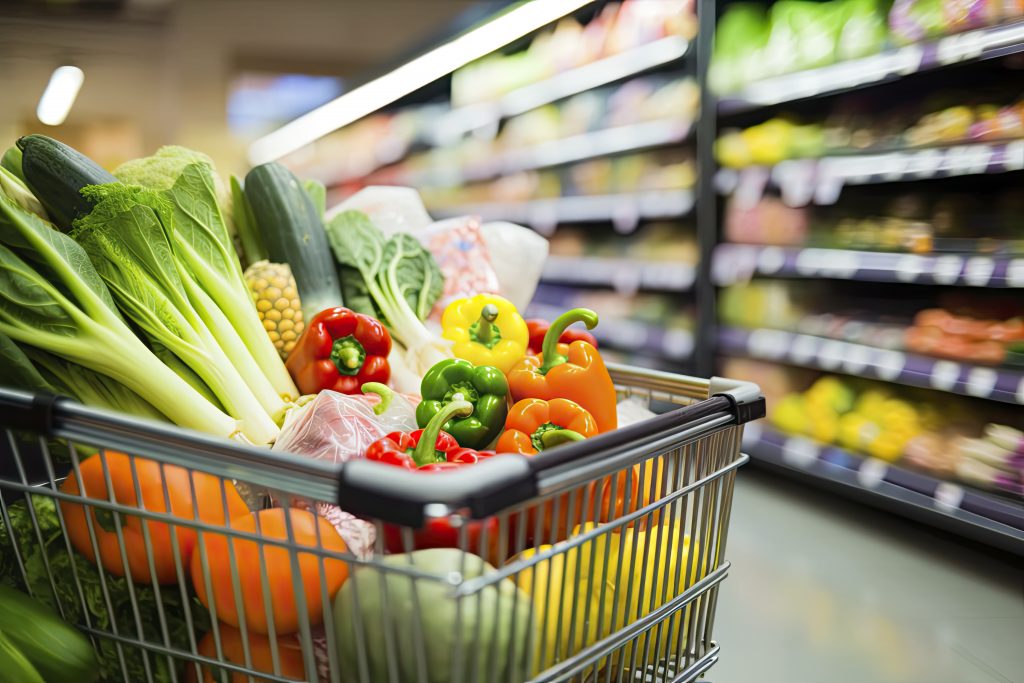
As we grapple with the economic challenges of rising costs, maintaining a healthy diet might seem like an unattainable luxury for many. Meal planning is a super handy way to eat healthy without overspending. I’ve definitely had my moments of struggle, but over the past year, I’ve made a real effort to focus on planning meals and reducing food waste. In this post, I’m sharing some practical tips to help you eat well without blowing your budget.
Embrace Meal Planning
Meal planning isn’t just about saving time and reducing stress—it’s also a great way to eat healthy on a budget. By setting aside a little time each week to plan your meals, you can make a big difference in both your health and your finances.
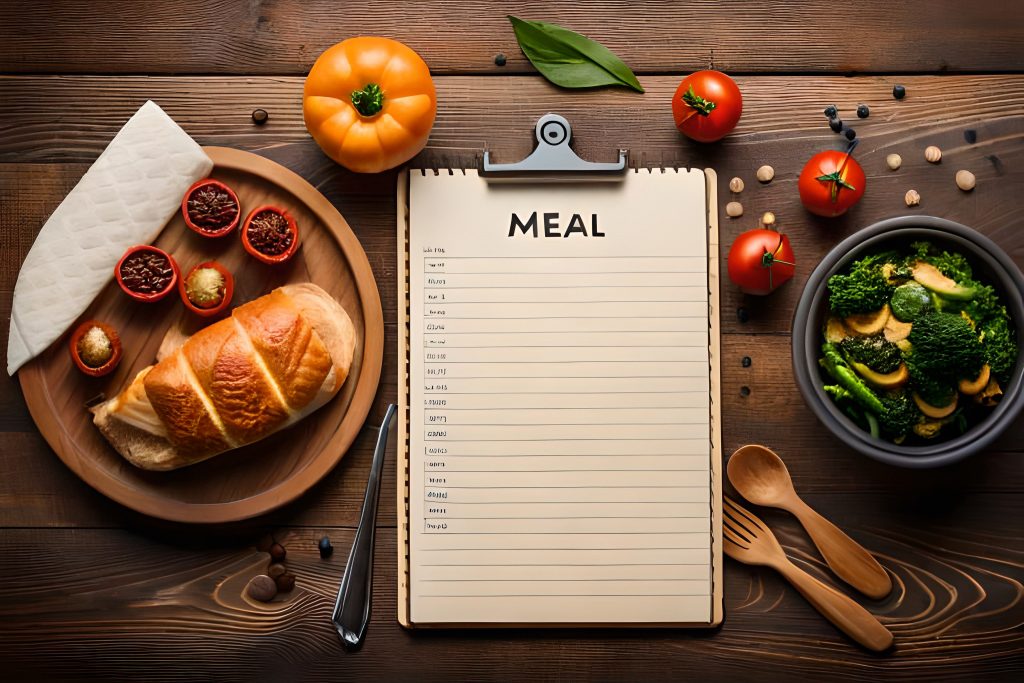
- Make Time for Planning:
- Choose a day that works for you, maybe Sunday mornings (like me) or whenever you have a free moment. I like to grab a cup of coffee to enjoy while going through my recipes, scrolling through the internet or my Cookidoo recipe book (from Thermomix) for inspiration.
- When I plan, I try to think about balance. You know, making sure we’ve got enough veggies, some protein, and whole grains for energy. It’s all about finding what works for your family’s tastes and needs.
- Incorporate Nutrient-Rich Foods:
- When planning your meals, aim for a well-balanced diet that includes a variety of nutrient-rich foods. Incorporate lean proteins such as chicken, fish, tofu, or beans; plenty of colorful vegetables; fresh fruits; and whole grains like brown rice, quinoa, or whole wheat pasta.
- Consider your family’s dietary preferences and any specific nutritional needs when selecting recipes. Don’t forget to include healthy fats from sources like avocados, nuts, and olive oil.
- Get Creative with Ingredients:
- Planning for leftovers has been a game-changer for us. Cooking a little extra means we can use it for lunches or another dinner later in the week. It’s like having a head start on meal prep!
- Often times with recipes like Bolognese, soups and stews, I will make a bit more and then vacuum seal and freeze them for nights when I don’t have time to cook.
- Sometimes I’ll roast a bunch of veggies at once and use them in different meals throughout the week. It saves time and money, plus it’s less wasteful.
- Create a Shopping List:
- Once I’ve planned my meals, I jot down all the ingredients I need. Taking a quick peek in the pantry ensures I don’t end up grabbing extras we already have. If you’re a Thermomix user, you’ll appreciate how the Cookidoo app automatically adds all the recipe ingredients to your shopping list for the week. It’s one of the features I really enjoy about the app.
- Additionally, skimming through flyers to spot sales and discounts on essentials is another tactic I rely on.
- When I head to the store, sticking to this list is crucial. It prevents me from impulsively picking up unnecessary items, ensuring we stay within our budget.
- Skip Takeout Temptations
- Avoiding takeout temptations is essential, especially when considering how a meal for four outside can easily cost up to $100. When life gets hectic, the convenience of ordering in or grabbing fast food can be all too tempting. However, having a solid meal plan in place makes it much easier to resist these urges. Knowing that I have everything I need at home to whip up a quick and healthy meal reassures me that I’m making the best choice for my family’s health and budget.
- Moreover, cooking at home grants me full control over the ingredients that go into our meals. Unlike takeout, where mystery ingredients and hidden costs can lurk, preparing meals at home allows me to use fresh, wholesome ingredients without any surprises. It’s not just about saving money; it’s also about ensuring that we’re nourishing our bodies with quality, nutritious food.
Shop Seasonal and Local
When you shop for groceries, choosing fruits and veggies that are in season and grown locally can make a big difference for your wallet and your taste buds. These foods are not only cheaper but also taste better and are healthier for you.
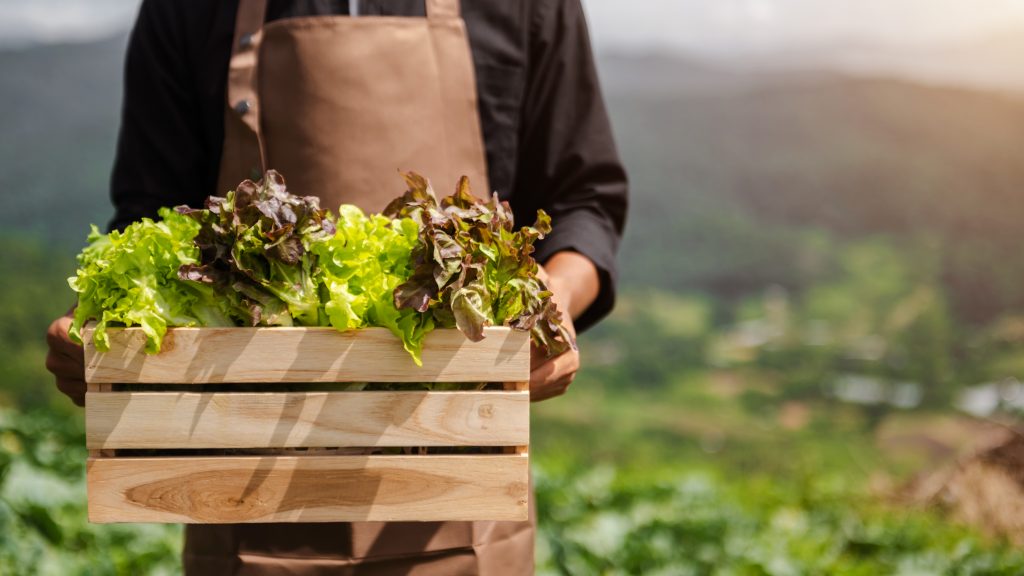
Farmers’ markets are one of my favourite places to shop when I can. There’s just something about chatting with the people who actually grow your food, picking out what’s fresh that week, and feeling a little more connected to where your meals come from. It’s also a great way to support local farmers and small businesses in your community.
If getting to a farmers’ market isn’t always doable (trust me, I get it), most grocery stores do carry local produce when it’s in season—so it’s still possible to shop fresh and local even on a regular grocery run.
Seasonal fruits and veggies are usually picked at their best, which means they taste better and are packed with more nutrients. And bonus—they’re often cheaper because there’s more of them around at that time of year. I’ve learned to keep an eye out for what’s in season and plan meals around that—it really makes a difference in both flavour and cost.
Plus, choosing local and seasonal is a little win for the planet too. Less travel time for the food means fewer emissions and less packaging, which is always a good thing. It’s a win-win all around!
Opt for Affordable Proteins
When it comes to getting enough protein without spending too much money, there are lots of options that won’t break the bank. You can try adding plant-based proteins like beans, lentils, and tofu to your meals. These foods are affordable and packed with protein to keep you feeling full and satisfied.
If you prefer animal proteins, there are still ways to save money while getting the nutrition you need. One trick is to keep an eye out for sales on meats. When you find a good deal, you can stock up and then vacuum seal the extra portions to keep them fresh for longer.
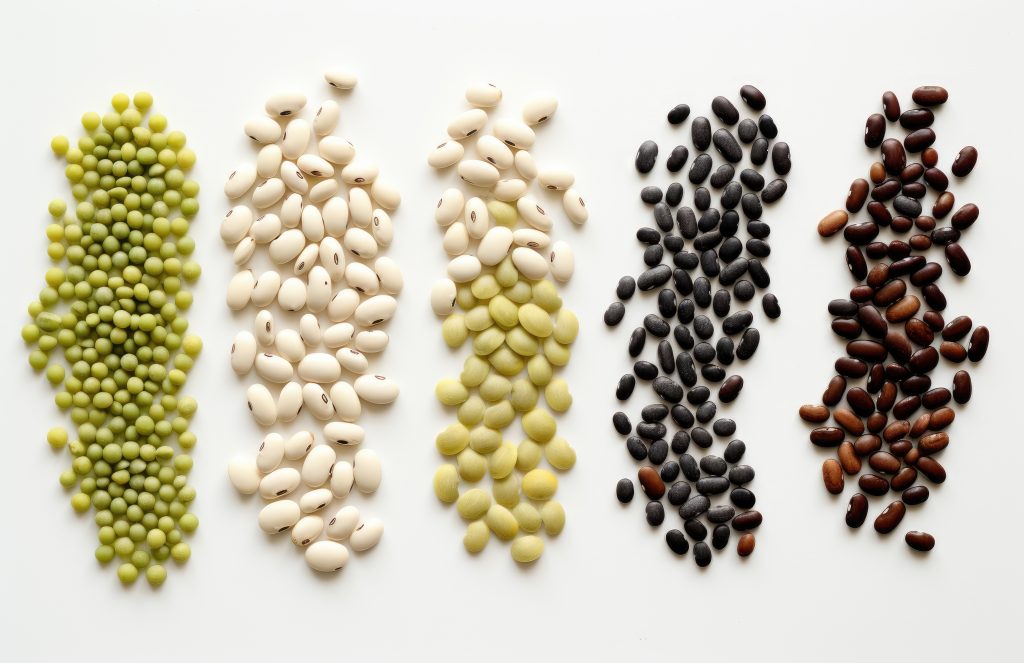
One of the easiest ways I’ve learned to save on groceries is by going for more budget-friendly cuts of meat. Chicken thighs, for example, are usually cheaper than chicken breasts—and honestly, they’re juicier and more flavourful too! I still buy chicken breasts when they’re on sale, but if the price is a bit high, I have no problem going with thighs instead. Ground meat is another go-to—it’s super versatile and way more affordable than cuts like steak or roasts.
If you’re trying to stretch your protein budget a little further (and who isn’t these days?), eggs and canned fish like tuna or salmon are awesome staples to have on hand. They’re affordable, easy to store, and full of good nutrients.
Just keeping an eye on sales, swapping in different cuts, and mixing up your protein sources can make a big difference without making you feel like you’re sacrificing anything. You’ll still get all the protein you need—and plenty of yummy meal options to keep things interesting through the week.
Stock Up on Staples
One of the best things I’ve learned when it comes to saving money and eating well is keeping the kitchen stocked with a few trusty basics. Things like rice, pasta, canned beans, and frozen veggies are total lifesavers on busy nights. They last a long time, and you can whip up all kinds of meals with them.
I love stocking up when there’s a good sale—especially on rice and pasta. During tight budget seasons, having those staples on hand has really come in clutch. Buying in bulk usually works out cheaper too. Just make sure to check the expiry dates so nothing goes to waste!
Storage makes a big difference. I keep my dry goods in airtight containers so they stay fresh longer. And if I buy meat or anything perishable in bulk, I portion it out and freeze it right away. A few years ago, I invested in a vacuum sealer and honestly, it’s been one of my favourite kitchen tools. It keeps everything fresh way longer and helps cut down on food waste.
Having these basics around just makes cooking feel less stressful—especially on those days when you’re too tired to think. Dinner comes together way quicker when you’ve got a well-stocked pantry and freezer.
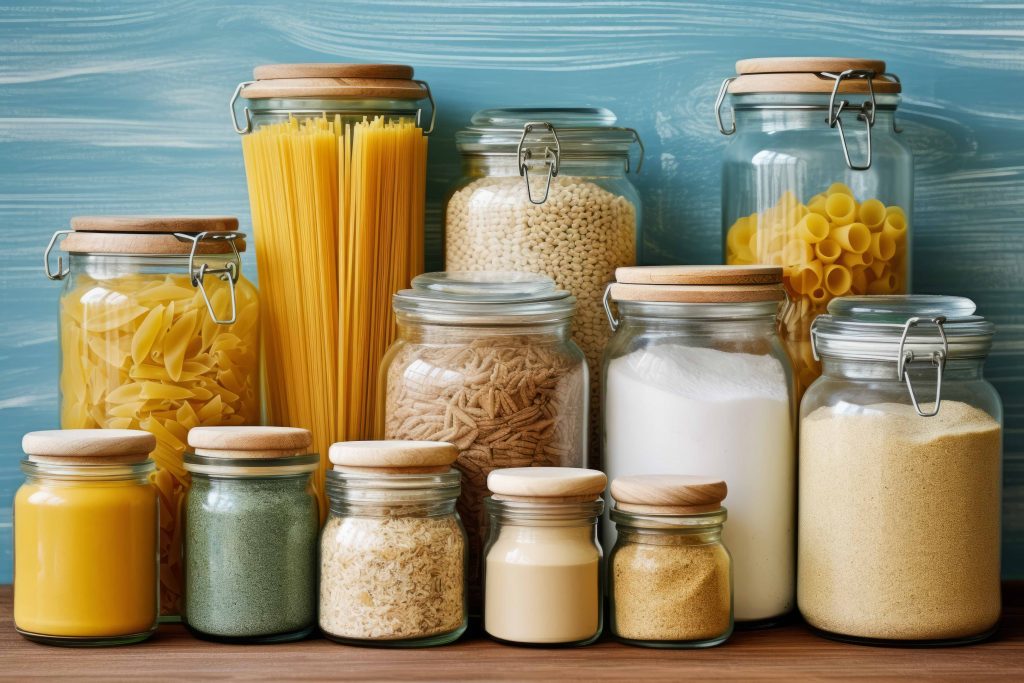
I like to practice FIFO (first in, first out) by rotating my stock of staple ingredients. I always put new items to the back and older items first to ensure nothing goes to waste. I also maintain a list of staple ingredients that I frequently use and regularly check my pantry to see what needs restocking. This helps me avoid running out of essentials unexpectedly.
Cook from Scratch
Cooking from scratch can feel a little intimidating at first, but really—it just means making meals yourself using fresh ingredients instead of grabbing something pre-made. I’ve found it’s usually cheaper, tastes better, and the best part is, you get full control over what goes into your food.
If you’re just starting out, keep it simple. I like sticking to easy recipes with just a few ingredients and basic steps—nothing fancy. It really helps build confidence without feeling overwhelmed. And when time’s tight (which, let’s be honest, is often!), batch cooking has been a total lifesaver. I’ll make a big pot of chili or soup and freeze the extras. Having a vacuum sealer has made that even easier—it keeps everything fresh so I can just grab, heat, and go on busy nights.
Whenever I can, I try to use fresh ingredients—fruits, veggies, meats, whole grains. Not only do they usually taste better, but they’re often healthier and stretch the budget further than I expected.
And if your first few tries don’t go as planned? That’s totally normal. I’ve had my fair share of flops in the kitchen. Just keep practicing and learning as you go. Before you know it, you’ll be cooking meals you’re proud of—and maybe even enjoying the process along the way.
Limit Processed and Convenience Foods
Processed and pre-packaged foods might be convenient, but they’re often loaded with extra sugar, salt, and unhealthy fats—not to mention they usually cost more than making things yourself. I get it though—when life gets busy, it’s tempting to just grab whatever’s easy. I’ve definitely been there.
But I’ve learned that choosing whole foods—things like fresh fruits, veggies, whole grains, and lean proteins—can actually save money and help you feel better in the long run. The closer the food is to its natural form, the better it usually is for your body and your wallet.
When the snack cravings hit (especially during those after-school chaos hours), try putting together something simple at home. A quick fruit salad, veggie sticks with hummus, or even a batch of homemade trail mix can go a long way. They’re healthier than most packaged snacks and surprisingly more affordable when you prep ahead.
Eating well on a budget isn’t about being perfect—it’s about making small, doable shifts that really add up over time. With a bit of planning, smart grocery shopping, and a few go-to recipes, healthy eating can become something you actually look forward to. Start small, and let it grow from there. You’ve got this.